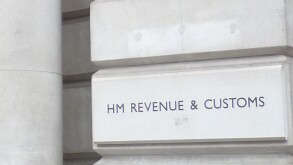
|
Nina Sava |
This month the Romanian Government has approved an Emergency Government Ordinance for the introduction of a new tax as of January 1 2014. The so-called construction tax payable to the state budget (distinct from the existing building tax which is income for the local budgets) stems from the commitment the government has made towards the IMF to increase the efficiency of the Romanian fiscal system and to ensure financial stability of the national economy, in other words to increase tax revenue. Moreover, in line with the objectives of the governing programme to extend the "taxable base", the Romanian government is now committed to tax what has not been taxed before. Romania traditionally subjects buildings to tax (the level of building tax for legal persons is maximum 1.5% of the gross accounting value of the asset, or in the range of 10-40% in case of buildings which have not been revalued). Construction tax, however, is targeted at constructions other than buildings and which consequently are not subject to building tax. Constructions subject to the new tax include inter alia power plants, oil & gas wells, drilling and production platforms, mine shafts, railway/road/telecommunications infrastructure, constructions for transport of electricity and many more. In practice, the list may be virtually open, as in principle any construction not subject to building tax should be subject to construction tax.
Construction tax is to be due on an annual basis and has been set at 1.5% of the accounting value of qualifying constructions (as of December 31 of the previous year), less the value of buildings/works for which the building tax is due.
The assessment whether a certain construction (larger category which includes the buildings sub-category) was subject to building tax or not was already a conundrum even for the most experienced tax experts. Given that the construction tax is now confirmed, the analysis would be far more complex and the uncertainty considerably higher for the ordinary taxpayer. In the absence of clear and comprehensive application norms, this tax would leave room for debate, alternative interpretations and tax controversy or litigation.
A simple example could be wind turbines which, as most agree, are not buildings; hence they should not be subject to building tax. However, this has not stopped some local tax authorities from levying building tax on (parts of) wind turbines. A new question arises now along with the new tax: Should wind turbines be subject to construction tax or not? As this type of construction is not specifically mentioned in the list of qualifying constructions, one may be prompted to conclude that the answer is "no". However, why would a hydro, thermal or nuclear power plant be subject to construction tax, whereas a wind turbine should not? If this is an easy scenario, how about solar panels?
Numerous questions would be raised before and after the Emergency Government Ordinance is enforced. However, in tax matters, answers rarely matter for the ordinary tax inspector unless they are binding and provided in writing by the relevant tax authorities. In our view, this new tax should, or at least may, increase taxpayers' interest in advanced tax rulings. For those with numerous or high value constructions, the availability of a binding ruling would be of the utmost importance, helping management estimate and control this fairly costly tax, its impact on EBITDA and ROA as well as reducing the scope for undesirable tax litigation.
Nina Sava (nina.sava@ro.ey.com)
EY
Tel: +40 21 402 4000
Website: www.ey.com









